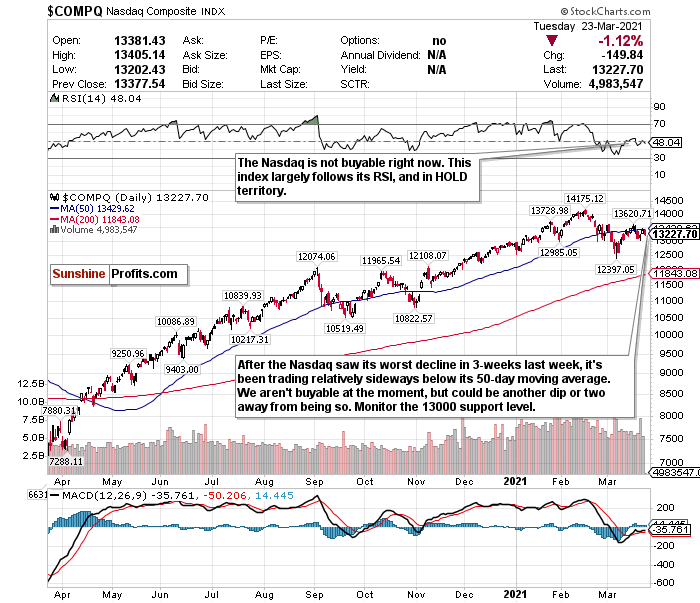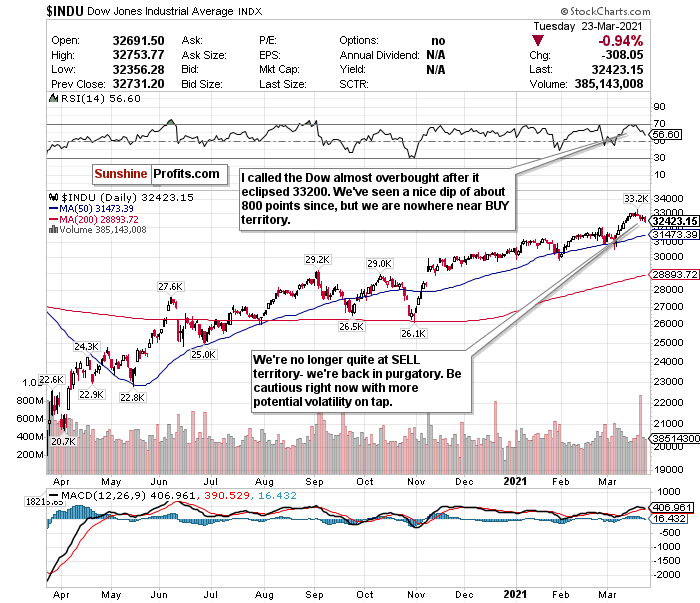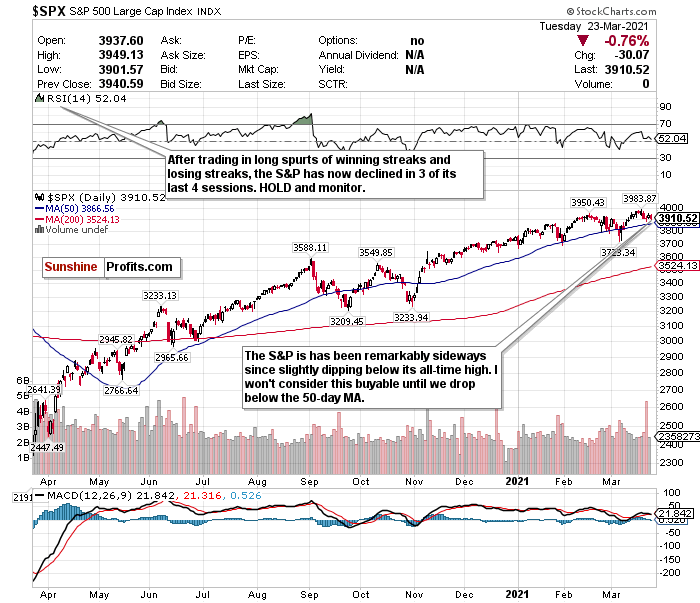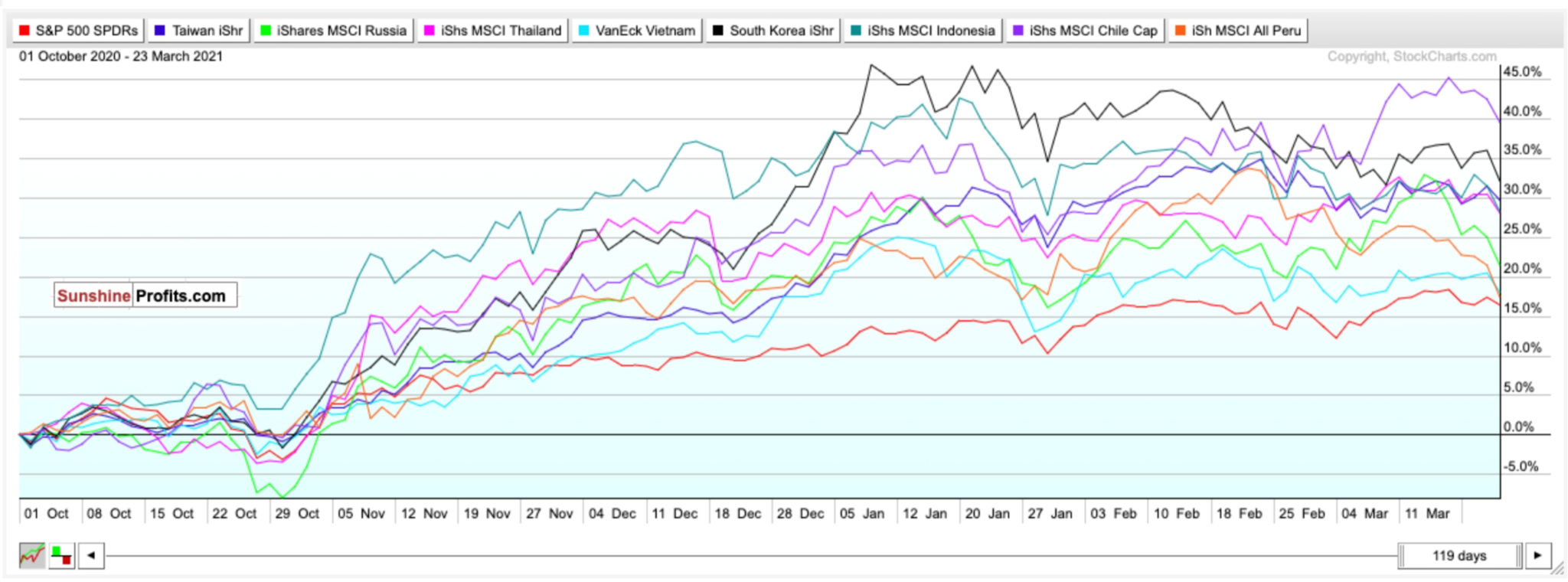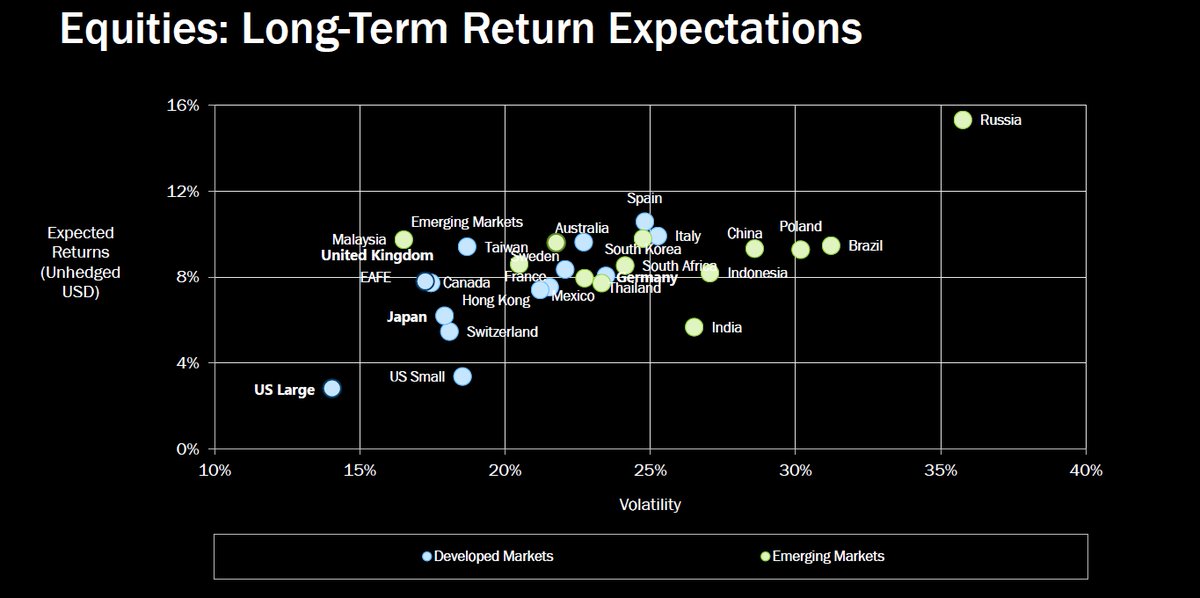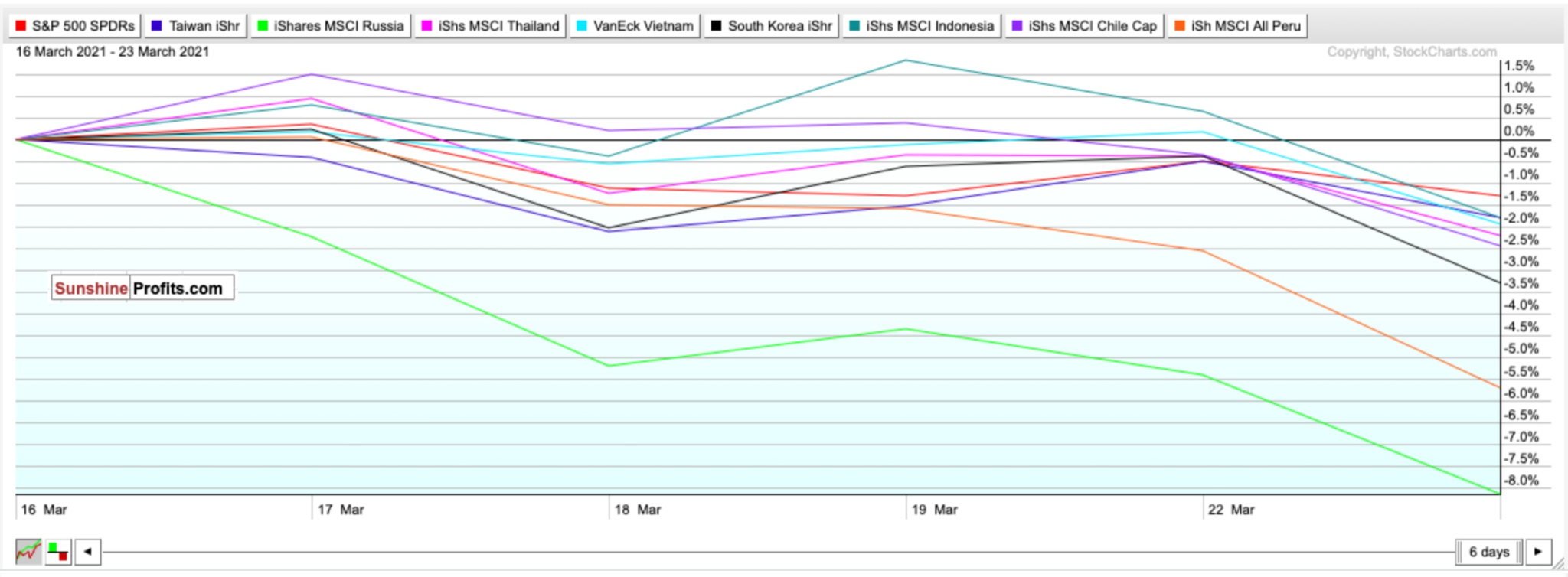In the next edition of this newsletter, we’re going to do a special on REITs. We will discuss which real estate sectors could see significant recovery after a brutal 2020.
Which real estate sectors could be long-term solid bets? There are a few you might not be thinking of, and we will also discuss why REITs could be a great hedge against rising bond yields and inflation scares.
Do you realize what Tuesday (Mar. 23) marked? One year since the market bottomed. Can you believe that it’s already been a year? Calling it a roller coaster is an understatement.
One of the most crucial market concepts is that the market never looks back. It is a forward-looking instrument. Talking about the past as it relates to the market really doesn’t do anyone any good.
However, after the year we’ve had, it’s essential to take a breath, reflect, and see what lessons we can learn from.
Ethan Wolff-Mann, a Senior Writer for Yahoo! Finance, put out a great article, “What we have learned in the 12 months since ‘the bottom’” and discusses several key points:
- ‘Every crisis is the same’
- Panic can hurt a portfolio
- You genuinely don’t know what’s going to happen
- Rebalancing comes out as a huge winner
As we sit here a year later, we can finally see the light at the end of the tunnel. Vaccines are weeks away from being available to all adults over 16 in the U.S., while COVID numbers continue to drop. But we are still confronting the reality of a pandemic that is still raging in Europe and other parts of the world. Inflation signs are flashing, and unstable bond yields are scaring tech investors every few days. But keep the above lessons in mind.
My personal biggest takeaway from the last year that I have applied since the several market downturns we’ve had thus far in 2021? Nobody can predict the future and never ever try to time the market. Many investors a year ago didn’t stick it out through the volatility and lost out. Some panic sold near the bottom and never bought back in.
My goal for these updates is to educate you, give you ideas, and help you manage money like I did when I was pressing the buy and sell buttons for $600+ million in assets. I left that career to pursue one to help people who needed help instead of the ultra-high net worth.
With that said, to sum it up:
A year after we bottomed, there is optimism but signs of concern. The market has to figure itself out. More volatility is likely, but I don’t think that a decline above ~20%, leading to a bear market, will happen any time soon.
Hopefully, you find my insights enlightening. I welcome your thoughts and questions and wish you the best of luck.
Nasdaq- Not Buyable but Stay Tuned
Figure 1- Nasdaq Composite Index $COMP
The last time I switched my Nasdaq call to a BUY on Feb 24, that worked out very well. I will use the same criteria again for the Nasdaq as the market figures out bond yields: The RSI and the 13000 support level. I need the Nasdaq’s RSI to dip below 40 while also falling below 13000 before buying.
We’re not quite there. The Nasdaq’s been relatively sideways over the last week and hovering around 13200 with a 48 RSI. We could be a dip or two away from possibly being buyable, but this all really depends on bond yields and if Jay Powell eats an apple. The market seemingly always moves no matter what the Fed Chair does.
If the tech sector takes another big dip, don’t get scared, don’t time the market, monitor the trends I mentioned and look for selective buying opportunities. If we hit my buying criteria, selectively look into high-quality companies and emerging disruptive sub-sectors such as cloud computing, e-commerce, and fintech.
HOLD, and let the RSI and 13000-support level guide your Nasdaq decisions. See what happens over subsequent sessions, research emerging tech sectors and high-quality companies, and consider buying that next big dip.
For an ETF that attempts to correlate with the performance of the NASDAQ directly, the Invesco QQQ ETF (QQQ) is a good option.
The Dow Jones is No Longer Overbought
Figure 2- Dow Jones Industrial Average $INDU
After its red hot run, the Dow Jones is no longer at a record high, nor is it overbought. We’ve pulled back about 800 points from the record. The RSI has also dipped below 60 for what it seems like the first time in forever.
Having Dow exposure can be valuable. The index has many strong recovery cyclical plays that should benefit from the potentially tremendous economic reopening. The Dow could also be quite beneficial to own right now due to trillions of stimulus dollars pumping up the economy, the Fed’s current monetary policy, and as a hedge against volatile growth stocks.
But at this level, it’s probably better to HOLD, let it ride, and maybe even consider trimming some profits on another up day.
Many analysts believe the index could end the year at 35,000, and the wheels are in motion for a furious rally. But you could do better for a buyable entry point.
From my end, I’d prefer to stay patient, vigilant and find better entry points.
My call on the Dow stays a HOLD.
For an ETF that aims to correlate with the Dow’s performance, the SPDR Dow Jones ETF (DIA) is a reliable option.
Which Direction Could the Streaky S&P Go?
Figure 3- S&P 500 Large Cap Index $SPX
In fitting with the theme of reflection and the 1st anniversary of the bull market, consider the history of the S&P 500. On average, S&P 500 bull markets since 1957 resulted in price gains of 179% and lasted an average of 5.8 years.
The S&P has risen about 75% in a year.
If history tells us anything, we’re just getting started. However, right now, the S&P 500 is a complex index to call. It’s incredibly streaky and is between a rock and a hard place. It’s probably better to monitor the streakiness for now until it hits a buyable level.
We’ve been hovering between 3910-3940 over the last few sessions. While we’re still not far from a record high, the index has declined in 3 of its previous 4 sessions. Mild declines for the most part, but still declines.
For now, this is simply not behaving like a buyable index. Unless I see some sort of buy or sell signal for the S&P 500, I think we’ll keep playing this game.
HOLD for now, but be prepared to either BUY or SELL depending on its moves. For an ETF that attempts to directly correlate with the performance of the S&P 500, the S&P 500 SPDR ETF (SPY) is a great option.
Beware of Inflation
Bond yields and inflation fears have replaced the virus as the most significant market mover by far.
We need some clarity- is inflation really coming back, or is all this fear overblown?
On the one hand, all of this stimulus coupled with a dovish Fed make inflation a foregone conclusion. The Fed is clearly going to tolerate inflation, and we could see it hit 2.2% by the end of the year- about 20 basis points ahead of the Fed's benchmark target.
Plus, Moody's Analytics chief economist Mark Zandi feels that investors have not fully grasped that inflation is "dead ahead" and are grossly underestimating its seriousness and effect on every sector in the market.
On the other hand, BoA, in a March 10 note, described inflation as "well-contained." The bank also said that inflation fears would subside by the end of the year and expects CPI inflation to be well shy of the Fed's 2% target and hit 1.7% by the year's end.
It's great that the Fed is hopeful on a 6.5% GDP recovery, but if they keep rates at 0% through 2023, it won't be sustainable with this growth rate. If they're forced to hike rates before they want to, it could be very, very bad for stocks.
Five-year inflation expectations have also more than doubled from last year's low and are now at around their highest levels since 2013.
"The rich world has come to take low inflation for granted. Perhaps it shouldn't." -The Economist.
As hedges against inflation, consider BUYING the SPDR TIPS ETF (SPIP), the Invesco Optimum Yield Diversified Commodity Strategy No K-1 ETF (PDBC), and the iShares Cohen & Steers REIT ETF (ICF).
As I mentioned in the intro, we will discuss REITs and how they can be a strong hedge against inflation in our next newsletter.
Mid-Term/Long-Term
Add Emerging Market Exposure- Period
Figure 5- SPY, EWT, ERUS, THD, VNM, EWY, EIDO, ECH, EPU comparison chart- Oct. 1, 2020-Present
Since October 1, 2020, the SPDR S&P 500 ETF (SPY) has gained around 16.44%.
But if you compare that yield to that of my top emerging market picks for 2021, it has underperformed.
Consider this too.
With inflation on the horizon, a surge in commodity prices combined with shifting demographics could send other emerging markets upwards long-term. Plus, with birth rates plummeting during the pandemic in developed markets, it could mean long-term upside for emerging markets.
PWC echoes this sentiment and believes that emerging markets (E7) could grow around twice as fast as advanced economies (G7) on average in the coming decades.
For 2021, the following are my BUYs for emerging markets and why:
iShares MSCI Taiwan ETF (EWT)- Developing country, with stable fundamentals, diverse and modern hi-tech economy, regional upside without China’s same geopolitical risks.
iShares MSCI Thailand ETF (THD)- Bloomberg’s top emerging market pick for 2021 thanks to abundant reserves and a high potential for portfolio inflows. Undervalued compared to other ETFs.
iShares MSCI Russia Capped ETF (ERUS)- Bloomberg’s second choice for the top emerging market in 2021 thanks to robust external accounts, a robust fiscal profile, and an undervalued currency. Red-hot commodity market, growing hi-tech and software market, increasing personal incomes. Russian equities may also have potential upside north of 35%.
Figure 6- Equities: Long-Term Return Expectations Developed Markets/Emerging Markets
VanEck Vectors Vietnam ETF Vietnam (VNM)-Turned itself into an economy with a stable credit rating, strong exports, and modest public debt relative to growth rates. PWC believes Vietnam could also be the fastest-growing economy globally. It could be a Top 20 economy by 2050.
iShares MSCI South Korea ETF (EWY)- South Korea has a booming economy, robust exports, and stable yet high growth potential. The ETF has been the top-performing emerging market ETF since March 23.
iShares MSCI Indonesia ETF (EIDO)- Largest economy in Southeast Asia with young demographics. The fourth most populous country in the world. It could be less risky than other emerging markets while simultaneously growing fast. It could also be a Top 5 economy by 2050.
iShares MSCI Chile ETF (ECH)- One of South America’s largest and most prosperous economies. An abundance of natural resources and minerals. World’s largest exporter of copper. Could boom thanks to electric vehicles and batteries because of lithium demand. It is the world’s largest lithium exporter and could have 25% of the world’s reserves.
iShares MSCI Peru ETF (EPU)- A smaller developing economy but has robust gold and copper reserves and rich mineral resources.
It’s been a rough week for emerging markets. However, there could be some attractive buying opportunities. Let’s take a closer look.
Figure 7- SPY, EWT, ERUS, THD, VNM, EWY, EIDO, ECH, EPU comparison chart- March 16-Present
Since March 16, all of my emerging market picks are down, namely Russia and Peru. This is especially intriguing because about a month ago, these were two of the top performers.
This could especially be a substantial buying opportunity for Russia. Russia’s down about 8.65% in the last 7 sessions. Despite the always risky geopolitical headwinds and a “killer” leading the country as President Biden so kindly described him, the upside potential is enormous.
With commodities set to soar and Russia’s immense natural resources, this is a no-brainer. Not to mention, Russia has a flourishing tech scene, with companies like Yandex increasing their business operations and global footprint. Not to mention, according to The Economist’s “Big Mac Index,” the Ruble could be the most undervalued currency in the world.
The ERUS ETF right now is a pure value play with tremendous upside potential. There are risks involved as well, just as with any investment. But I really like this as a potential entry point.
Outside of the aforementioned country-specific ETFs, you can also BUY the iShares MSCI Emerging Index Fund (EEM) for broad exposure to Emerging Markets.
Long-Term
One year out from the bottom and I remain more convinced than ever that the economic recovery is going better than expected. Vaccines for any adult who wants them in America is right around the corner. But it’s a blessing and a curse if this recovery goes “too well.”
Continue to pay attention to complacency, overvaluation, bond yields, and especially inflation.
Once again- if he so much has stops in 7-11, Jay Powell will move the markets.
Time will tell what happens. There could be more short-term swings. But the economic climate is reopening, and things look a bit sunnier than they did at this time a year ago.
I think we could see some more swings as the market figures out bond yields and inflation. We may be at the beginning of the end of the pandemic, and 2021 should be a big year for stocks despite some choppy waters.
Summary
I’m going to list once again the top lessons learned from a year ago, as eloquently written by Ethan Wolff-Mann from Yahoo! Finance. He’s absolutely on the money with them.
- ‘Every crisis is the same’
- Panic can hurt a portfolio
- You genuinely don’t know what’s going to happen
- Rebalancing comes out as a huge winner
Learn these lessons from a year ago—play volatility to your advantage. Be cautious but not scared, and do not try to time the market. There are some concerns, but the overall backdrop right now is favorable for stocks.
Most importantly, though:
NEVER TRADE WITH EMOTIONS.
Consider this too. You can sit out and be scared and wait for the perfect buying opportunity all you want. But as we now a year out from the bottom on March 23rd, 2020, let’s see the returns you’d see today if you bought ANY of these index-tracking ETFs on March 23rd when it appeared the world was ending: Russell 2000 (IWM) up 120.38%. Nasdaq (QQQ) up 87.27%. S&P 500 (SPY) up 77.50%. Dow Jones (DIA) up 77.17%.
Nobody knows “where” the actual bottom is for stocks. However, in the long-term, markets always move higher and focus on the future rather than the present.
To sum up my calls:
I have BUY call for:
- The iShares Russell 2000 ETF (IWM)
I have HOLD calls for:
- The Invesco QQQ ETF (QQQ),
- the SPDR S&P ETF (SPY), and
- the SPDR Dow Jones ETF (DIA)
I also recommend selling or hedging the US Dollar and gaining exposure into emerging markets for the mid-term and long-term.
I have BUY calls on:
- The iShares MSCI Emerging Index Fund (EEM),
- the iShares MSCI Taiwan ETF (EWT),
- the iShares MSCI Thailand ETF (THD),
- the iShares MSCI Russia ETF (ERUS),
- the VanEck Vectors Vietnam ETF (VNM),
- the iShares MSCI South Korea ETF (EWY),
- the iShares MSCI Indonesia ETF (EIDO),
- the iShares MSCI Chile ETF (ECH),
- and the iShares MSCI Peru ETF (EPU)
Additionally, because inflation shows signs of returning, and I foresee it potentially worsening as early as Q3 or Q4 2021...
I have BUY calls on:
- The SPDR TIPS ETF (SPIP),
- the Invesco Optimum Yield Diversified Commodity Strategy No K-1 ETF (PDBC), and
- the iShares Cohen & Steers REIT ETF (ICF)
Thank you.
Matthew Levy, CFA
Stock Trading Strategist


